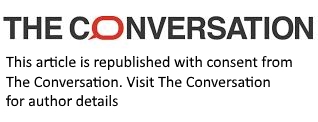Who really wins and loses from first homebuyer schemes? What you need to know as a buyer, owner or renter
- Written by John Freebairn, Professor, Department of Economics, The University of Melbourne
The Coalition and Labor parties have each produced election policies designed to help low and middle income earners buy homes.
Who is likely to benefit from them and who is likely to suffer is far from obvious, and depends in part on the price of the homes on offer.
But broadly speaking, both parties’ schemes will hurt buyers of low-priced homes and renters – and here’s why.
What’s on offer?
The Coalition and Labor policies have common themes, among them lower deposits for first homebuyers on low to middle incomes buying below-average priced homes.
The Coalition would extend its Home Guarantee Scheme scheme. It enables buyers with deposits as small as 5% (2% for single parents) to avoid paying mortgage insurance.
Labor’s Help to Buy Scheme would see the government partnering with buyers for up to 30% of the value of an existing home and 40% of the value of a new home, also with a low (2%) deposit.
Labor’s income caps are A$120,000 for couples and $90,000 for singles. The Coalition’s are $200,000 per annum for couples and $125,000 for singles.
Each scheme has price caps for the homes that can be bought with it. Roughly similar, they range from $400,000 in regional Tasmania to $900,000 in Sydney.
What’s likely to happen
For properties with values above the thresholds, the policies should have next to no effects on demand or supply, and as a result, close to no effect on prices.
For properties with values below the thresholds, the resulting increase in demand should push up prices (as well as getting more people into homes).
How much will depend on how responsive the supply of housing is to prices. The more responsive (“elastic” is the term used), the less prices will need to climb to get the extra people into homes.
There’s reason to believe housing supply is fairly inelastic. The bulk of the supply of housing is fixed. It was built some time ago.
Read more: Building more houses quickly is harder than it looks. Australia hasn't done it in decades
Also, it takes time to build new homes, and supply of labour is fairly fixed, being hard to ramp up quickly. Uncertainty about whether the policy will continue might make builders cautious about hiring more staff, even if they can get them.
This is likely to push up the prices of lower (but not higher) value properties.
The Australians the schemes help into lower value properties will still come out ahead, but not others trying to get into lower value properties.
Low-priced homes will cost more
Some who would have been only just able to get into a lower-priced home will miss out as a result of the scheme, seeing prices climb just beyond their reach.
Repeat buyers of lower-priced homes face no such problem. People moving from one lower-priced home to another will find both the home they buy and sell have climbed in price, leaving them broadly no worse off.
All they will face will be a small net loss associated with higher (percentage based) agent fees and higher stamp duty.
Low-priced rents will cost more
Renters of and owners of lower-priced investment properties will be worse off.
More than one quarter of households rent, normally in lower-priced homes. New landlords who have to pay more for these homes will charge more in rent, in what will be an undesirable second-round consequence of the policies on offer.
Some households who would have rented will be able to get into home ownership as a result of the schemes. Others, who still have to rent, will pay more.
We ought to build more homes
While the size of these effects is uncertain, it’s easy to determine their direction.
The best way to get more renters into homes is to build more homes for them, enough to push down prices.
Stopgap proposals aimed at giving a fortunate few a leg-up can have unintended consequences.
Authors: John Freebairn, Professor, Department of Economics, The University of Melbourne





